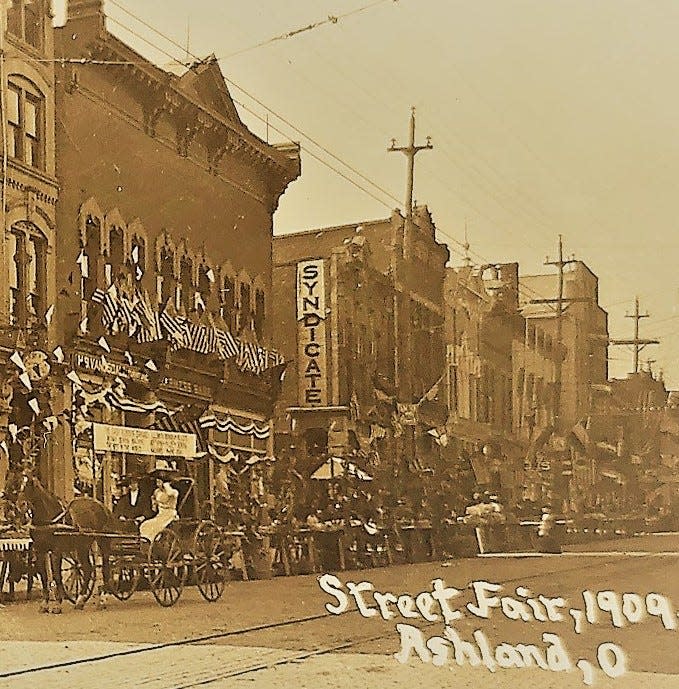Ashland Memories: Building upon grander aspirations in the mid-1800s
Main Street log and wood frame buildings and houses from the 1840s evolved through the following decades as entrepreneurs built upon grander aspirations, generally using brick.
The Old Stone Corner was joined by three-story brick hotel buildings, the Sampsel House in 1850 and the Miller House in 1853. In 1856, the town purchased the Slocum Tavern and tore that old frame building down to build a town hall.
At a cost of $10,000, the town hall stood two stories high along Main Street. The slope of Center Street provided for a basement level that housed jail cells, an engine house and room for holding elections. E.W. Wallack sold groceries out of a second floor storeroom, while Gorham and Parmely kept a dry goods store in the building.
Several new brick buildings rose on Main in 1866. Dr. J.B.F. Sampsel constructed one on the west corner of Main and Orange. The “Sampsel Corner” became another landmark on Main for a short time. However, in 1873 Sampsel sold the property to the First National Bank and the bank raised an imposing structure that dominated the site for another century.

Another brick building was erected on the site of the first McNulty tavern and known subsequently as the Bushnell block. For some years it housed the Kunkel and Good store. The Preis store was located there when it burned in 1962.
The story of Zack's Great Clothing Emporium
Zachariah Greenewald also built a brick building in 1866, “on the site of his old Clothing Emporium.” The Greenewald building still stands at 23 West Main.
On June 12, 1867, the States and Union newspaper carried a full column length ad announcing the “Removal and re-opening of Zack’s Great Clothing Emporium.” Zack Greenewald had improved “the Old Fortress” and was moving in a large stock of “first class clothing” as well as fabric piece goods by the yard. The location of this emporium was described as at the head of Orange Street.

Zachariah Greenwald was an interesting character with a flair for writing colorful advertising copy. He was born in Bavaria in 1821 and arrived at the port of New York at eighteen.
By 1854 he had moved to Ashland and acted as the agent for S. Apple & Co. His newspaper ads asserted With a motto of “Quick Sales and Small Profits,” the store claimed the largest and best selection of clothing and gentlemen’s furnishing goods.
Two years later, a heated rivalry between Greenewald and the tailor Laban Burgan played out in the advertising sections of the newspapers.
Burgan charged Greenewald with pawning off old and outdated goods on the people of Ashland, and announced that “the Jewish slop-shop must come down!”
Greenewald retorted that “The Jewish Temple Stands!” and stood behind its modern and fashionable stock. He accused the “little man west of us” (Burgan) with himself selling out of fashion goods.
Greenewald advertised his store employed “the best of workmen and one of Singer’s celebrated sewing machines,” which turned out goods worth double those made by hand.
An 1865 notice in the newspaper reflected difficult financial times, stating that Greenewald was “giving goods away for a song, and if the customer cannot sing, Zack sings the song himself — anything to clear off the shelves.”
When Zachariah Greenewald died in May 1882 at the age of 61, his obituary named him Ashland’s oldest clothing merchant. However, a whole new crop of entrepreneurs stood ready to step up.
This article originally appeared on Ashland Times Gazette: Ashland Memories: Main Street grows with use of brick buildings

